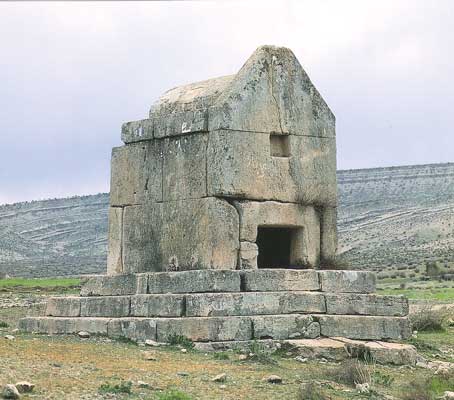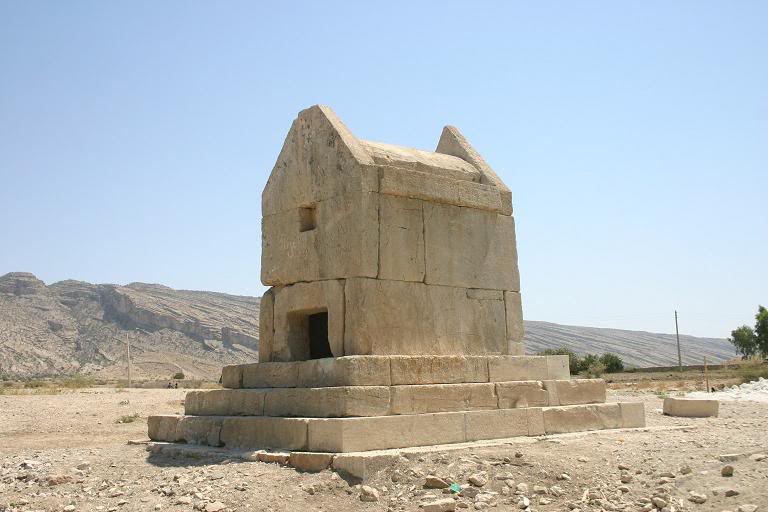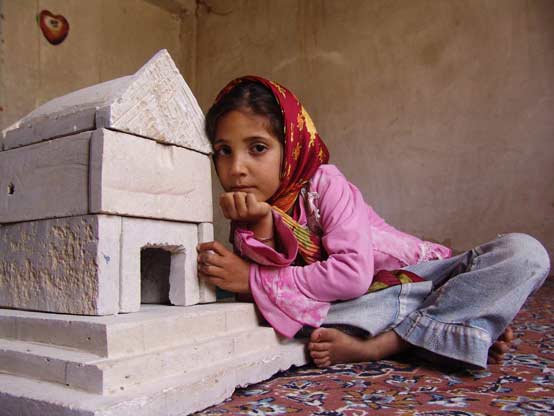The article below and the photographs originally appeared in the Historical Iran Blog. Kindly note however, that that the site is located in Dashtestan (Borazjan) and not Kazeroon as the article avers.
==============================================================================
Goor Dokhtar is a structure very similar to the mausoleum of Cyrus the Great. This structure is made of 24 slabs of stones, according to the Orartoie and Elamite principles such as the ziggurat of Choghazanbil. It is believed that Goor Dokhtar dates back to the Achaemenid era and is thought to be the resting place of the daughter or sister of Cyrus the Great, although the more prominent belief is that it may be that of his grandfather. While modern maps of the area place Goor Dokhtar in the Bushehr province, due to the proximity to Kazeroon, many tourist brochures of Kazeroon will claim Goor Dokhtar as their own. Goor Dokhtar literally means Zoroastrian girl.
While from a historical standpoint Goor Dokhtar is not any less important than Pasargadae, however, it currently sits alone and unattended in Dasht Eram in Bushehr, surrounded by mountains on all four sides. Without even knowing the history behind it simply its physical characteristics and appearance remind one of Pasargadae and any possible connection between the two structures.
Goor Dokhtar is a rectangular structure with a pointed roof which sits on top of a platform with 3 steps. The platform measures 5.5 by 4.5 meters and one meter high while the monument itself is 3 by 2 meters and with a height of 5.1 meters. Its entrance faces northwest and had a stone door which has long since disappeared and today simply appears as an opening. Currently the inside of the monument is empty and there is reason to believe that an inscription used to exist on the V shaped gable ceiling.
On the exterior of the roof, the stone which formed one side of the arched roof has been removed by vandals and its broken pieces are scattered around the structure. While from a preservation point this act is very unfortunate, however, it led to the discovery of an open space under the roof. Unlike Pasargadae this space had no opening to the outside and thus makes it unlikely that it was to contain a corpse.
Goor Dokhtar was discovered in 1960 by the Belgian archeologist Louis Vandenberg. This valuable monument is registered on the records of the Cultural Heritage Organization of Iran.






